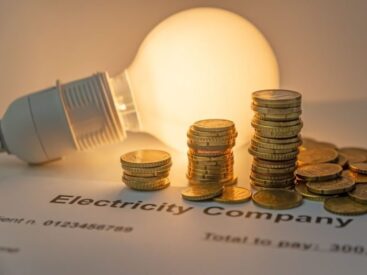Reduce Energy Costs Before the October Price Cap Increase

On Friday 16th August, Cornwall Insight (known for accurately predicting energy prices) estimated that energy prices will increase in October; just as homes need to start using their heating. Naturally, millions of people are worried about keeping their costs down.
Energy Prices
Ofgem is the non-ministerial government department that decides the price cap for 28 million homes in the UK. It is responsible for keeping energy prices in line with the prices paid by energy wholesalers. Ofgem’s price caps are re-evaluated every 3 months to ensure the energy tariffs are completely up to date and as of Monday 19th August 2024, Ofgem have capped yearly energy prices at £1,568.
What is Expected to Happen?
By analysing trends in energy prices and multiple other factors, Cornwall Insight were able to conclude that the energy price cap is likely to increase by 9% to £1,714 in October 2024. They have an incredibly positive record when estimating changes to the price cap, giving weight to the report. This means that households will need to pay an extra £146 per year on energy.
What Makes This Important?
Most homeowners dread the likely price cap rise thanks to the time of year – primarily because an increasing number of households will be relying on their central heating systems more than they did during the summer. As a result, more households will be relying on more energy for their heating which only raises their energy bills further. Similarly, pensioners will also feel the setbacks of a price cap increase because of the Winter Fuel Payment cutbacks as it means they do not have a stable income to deal with the higher energy prices.
How Can I Save on My Energy Bills?
Considering that everyone relies on their heating in colder months, it would be more cost efficient for homeowners to prepare for the potential rise with heating that uses up less energy for a similar output. Far infrared heaters are much more cost efficient than a traditional convection heater since there are no moving parts. All energy directed to an infrared heater comes out as heat energy with a 98.5% conversion rate meaning that the warmth felt from 2KW of convection heating equates to 600W of far infrared heating. Infrared heating is therefore much cheaper to keep as a reliable home heating system and is the clear option for reduced costs.
How Can Thermostats Help?
Additionally, the controllers are an important aspect of combating rising prices because they offer much more freedom with your heating. A programmable thermostat grants even further freedom by providing the option of maintaining a desired temperature at your desired times – so that no energy is used to heat your home while you are away.
Conclusion
While most people would consider using their heating sparingly for the future, it would become impossible for them to rely on their heating and still expect affordable energy. Therefore, far infrared heating is the obvious choice since they use less energy to achieve the same output – especially when Cornwall Insight expects energy price caps to rise in October 2024 and then rise further in January 2025.


